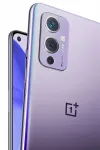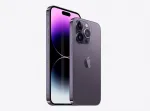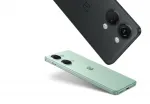The Nokia 3230, also known as the Nokia 3230, is a discontinued mobile device that was released in 2004 by the well-known brand Nokia. Despite being almost two decades old, this device still holds a special place in the hearts of many Nokia fans due to its impressive specifications and features that were ahead of its time.
Let's start with the device's body, which has a classic Mini-SIM compatibility and weighs 110 grams. The device's dimensions, which measure at 109 x 49 x 19 mm and 90 cc (4.29 x 1.93 x 0.75 in), make it easy to hold and carry around. The device comes in two sleek color options: Black and Red, which adds a touch of modernity to its design.
In terms of safety, the Nokia 3230 has a SAR (Specific Absorption Rate) value of 0.81 W/kg (head) and 0.23 W/kg (body), which is considered safe for human use. The SAR EU value sits at 0.41 W/kg (head). Moving on to its connectivity, the device offers a Pop-Port USB port, as well as an infrared port for fast data transfer. However, it does not have any WLAN capabilities, which might be a downside for some users.
The Nokia 3230 also features a Stereo FM radio, which allows users to listen to music and radio stations on the go. It also has a Bluetooth version 1.1, allowing for easy file transfer between devices. Unfortunately, it does not have any positioning features, which means that maps and location services were not available on this device.
The device's sound capabilities are quite impressive, with a loudspeaker and downloadable polyphonic and MP3 ringtones. However, it does not have a 3.5mm audio jack, which might be a turn-off for music enthusiasts.
The Nokia 3230 was announced in 2004 and has been discontinued since then. However, it still offered impressive specs for its time, such as the Symbian 7.0s OS and the Series 60 SE UI, along with a 123 MHz ARM925T CPU and TI OMAP 1510 chipset. These features allowed for smooth and efficient performance of the device.
Moving on to its memory, the Nokia 3230 has an internal storage capacity of only 6MB. However, it comes with an RS-MMC card slot, and a 32 MB card is included in the package, allowing for expandable storage options. It also has the capability to record up to 60 minutes of video clips, which was a significant feature during its time.
The battery life of this device is also worth mentioning, with a removable Li-Ion 760 mAh battery (BL-5B) that provides up to 150 hours of standby time and up to 4 hours of talk time. This was considered impressive for a device released in 2004 and could cater to the needs of heavy phone users.
The Nokia 3230 features a 2.1 inch TFT (Thin Film Transistor) display with 65K colors. It also has a resolution of 176 x 208 pixels and a 5-way navi key for navigation, which was a standard feature during that time. The display size of 35 x 41 mm and 14.0 cm made it compact and easy to use with one hand.
This device uses GSM technology and has GPRS (General Packet Radio Service) Class 10 and EDGE (Enhanced Data Rates for GSM Evolution) capabilities, with a maximum speed of 118.4 kbps. It supports 2G bands GSM 900 / 1800 / 1900, making it compatible with most cellular networks.
Some additional features of the Nokia 3230 include a Push to Talk function, a WAP 2.0/xHTML, HTML browser, and sensors. However, it does not have a front-facing camera, which was not a standard feature during its time.
In terms of photography, the Nokia 3230 comes with a single 1.23 MP main camera with QCIF (Quarter Common Intermediate Format) video recording. Although the camera specs may seem low compared to today's standards, it was quite impressive for a device released in 2004.
In conclusion, the Nokia 3230 may be a discontinued device, but it still holds value due to its impressive specifications and features that were ahead of its time. The device's compact design, decent battery life, smooth performance, and expandable storage options make it a practical and reliable choice for anyone looking for a basic, yet efficient mobile device.









